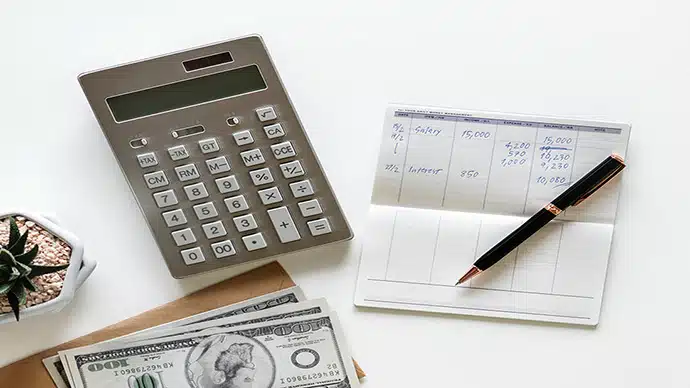
There’s an old saying that goes: “The first $1 million is the hardest to make.”
But I propose a slight adjustment: The first $50,000 is the most challenging to save. If you can do that by the time you’re in your 30s, though, the rest of the $1 million will largely take care of itself by the time you’re ready to retire (assuming you grow your balance about 10 percent per year between returns and contributions).
If you’re like most people in their 20s or 30s, you’ve probably held a half-dozen jobs or more, which means your 401(k)—if you have one at all—looks like a beat-up suitcase that’s been traveling around Europe. And you may have a hefty student loan payment to tend to, as well. So setting aside $50,000 by your early 30s may feel like an unrealistic goal.
But it’s not as difficult as it seems. There are plenty of ways to crunch the numbers and hit your target.
Save $5,000 in an IRA for 10 years, and you’ll have $50,000, right? (And that’s not even including any returns on your investments.) Or you can save $300 every month for 10 years, make an average stock market return of 7 percent, and you’ll have $50,000. That’s an easier way, assuming the market returns those averages (which it has historically, adjusted for inflation).
If you’re starting in your early to mid-20s, you’ve got a real advantage. Thanks to compounding, even tiny amounts saved in your 20s make an enormous difference later on. (Any family gifts you receive as college or grad school graduation approaches? Put half aside to start a retirement account.)
Believe it or not, assuming those 7-percent average annual returns, you’ll have six chances to double your money by age 65 if you start investing at 23. In other words, every $1 you save at 23 could be worth $64 at 65. Put grandpa’s $1,000 check into an IRA, and it could be worth $64,000 when you’re his age.
That said, it’s never too late to start setting money aside. Here are a few different routes to your first $50,000.
Scenario #1: Start from scratch, and get there in under a decade.
Maybe you just landed your first job, you haven’t started saving and that $300 monthly contribution seems impossible. Or you’re just dealing with big student loan payments and other expenses. So we’ll start slow, with a $50 weekly contribution—or maybe you put in $30, and your company kicks in $20, if you’re lucky. For now, we’ll still assume 7-percent returns. (That’s not a great assumption for a short timeframe, but it’s fair when you stick with it over the long haul.)
After three years, that gives you a rather humble-sounding $8,626. Right now, you’re probably thinking, “That sure doesn’t sound like $50,000. Heck, it doesn’t even sound like a new car.”
But be patient. Let’s say you get a better job and up your contributions to $65 each week, while your employer puts in $35. That’s $433 a month (factoring in some five-week months) for four years, along with 7-percent returns. In seven years, you’d have around $35,000. Just two short years later, you’d have nearly $52,000.
Scenario #2: Build your balance sooner, and the options open up.
The power of time can’t be overstated in these calculations. If you can build even a modest balance early on, it’ll make a big difference.
Many people are lucky enough to have family members who want to help with student loans, and plenty of student borrowers want to cancel out their debt as quickly as possible. So they take whatever graduation gifts they receive and pay down their loans. While it seems sensible, sacrificing the gold mine of retirement savings in your 20s in order to pay off student debt can be a big mistake.
Say you have $3,000 from a combination of graduation gifts and summer job savings. Put that toward your retirement savings starting at 23, and by following the same plan above, you’ll just about reach your $50,000 target by age 31.
Another option: Amass $5,000—through thriftiness, part-time work, cajoling gifts from uncles and aunts, whatever—and start saving $400 a month right away, perhaps $300 of your own cash and $100 from your employer or any variation of that. Again, assuming 7-percent returns, you’ll have more than $50,000 in seven years.
Bottom line? Getting to $50,000 by your 30s can be done, and there are many different paths that can take you there. Just remember, these are just rough guidelines. If you haven’t hit $50,000 by 32 or even 33, it’s not the end of the world. Maybe 7-percent returns evade you for a few years, as the market ebbs and flows. History shows the returns eventually arrive. Maybe you start later. Put in a little more and you can help compensate for lost time.
What you absolutely can’t afford to do is let any more valuable saving time pass you by—regardless of how old you are. Ideally, you start in your 20s when you have as much time as possible to build your balance. But even if you’re already in your 30s with little or no retirement savings, it’s possible to catch up by working a few more years and adding a few more bucks to your account each month.
The most important thing you can do today is stay focused on the first turn on the racetrack: getting to $50,000. Once you’re there, your savings habits will be firmly in place, and you’ll be pleasantly surprised at how the rest of the $1 million takes care of itself.
Written by Bob Sullivan, originally posted on Acorns.


